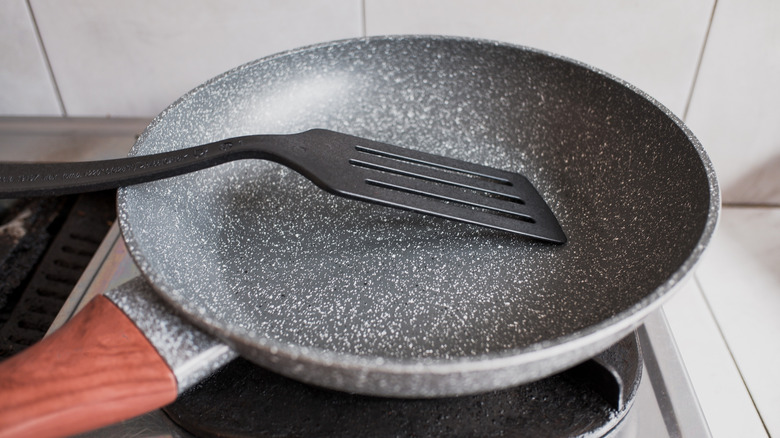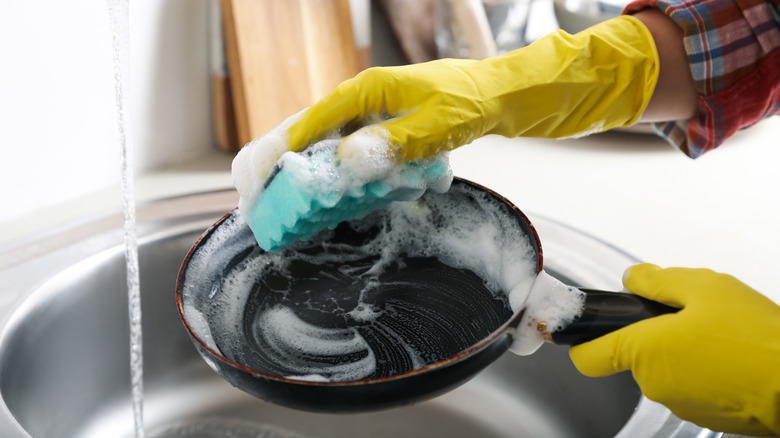How To Make Your Non-Stick Pans Last Longer
Nonstick pans are a kitchen essential, beloved for their ability to make cooking and cleaning a breeze. But as convenient as they are, these pans often fall victim to wear and tear. To keep your nonstick cookware in prime condition, it's important to know how to clean them safely. While each different type of pan has its own particular care instructions, hand-washing is a fairly common and easy-to-implement habit that can improve the longevity of most nonstick pans.
There are many types of nonstick pans, each designed to make cooking and cleanup easier by preventing food from sticking to the surface. The secret behind their nonstick properties often lies in their coating. Polytetrafluoroethylene (PTFE), more commonly known as Teflon, is one of the most widely used materials for this job. In recent years, many pans have adopted ceramic coatings, which offer a nontoxic alternative to PTFE and don't contain the potentially harmful chemicals sometimes associated with Teflon.
Both types of coatings — whether PTFE or ceramic — require special care to keep them working properly and to prevent damage. While nonstick pans are often labeled as "dishwasher safe," this doesn't mean you should rely on the dishwasher for cleaning. The extremely hot water used during dishwasher cycles can, over time, weaken or degrade the coating, reducing its nonstick capabilities and overall lifespan. By understanding how to wash and remove residue from nonstick pans without harsh chemicals and dishwashers, you can extend its lifespan.
How to safely clean your non-stick pans
Before you start cleaning your pan, make sure it has completely cooled down first. This isn't just a tip for nonstick pans — it's good practice for all cookware. Sudden temperature changes, like rinsing a hot pan with cold water, can cause the metal to warp or shift, potentially damaging your pan over time.
Once the pan is cool, wash it gently using regular dish soap and a soft sponge. It's important to avoid abrasive tools like steel wool or harsh brushes, as these can scratch the delicate nonstick coating. For tough residue that doesn't come off easily, soaking the pan in warm, soapy water for a few hours is often enough to loosen it.
If soaking alone doesn't do the trick, you can use a mild abrasive like baking soda to help tackle stubborn food reside that was burned on. Mix baking soda with a little water to create a paste that you can apply to the burned-on residue on your pan using your soft sponge. Scrub gently with the baking soda paste, and your pan will be clean without damaging its nonstick surface.

